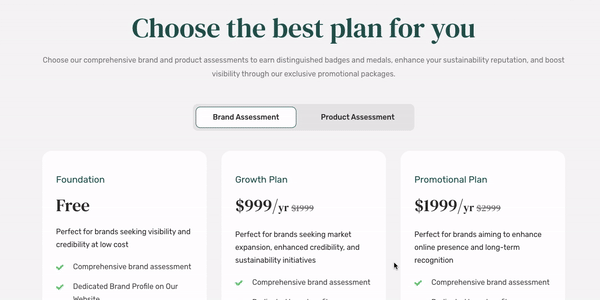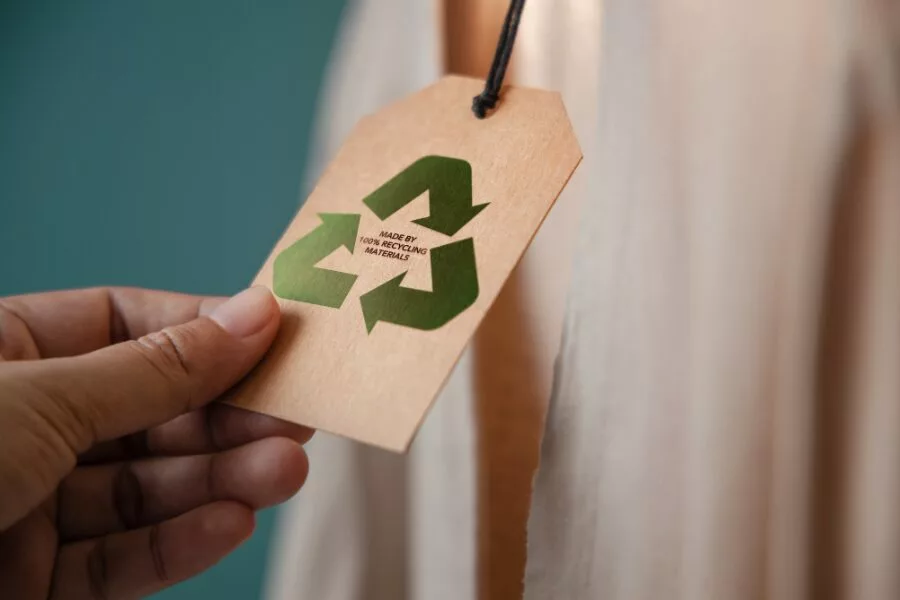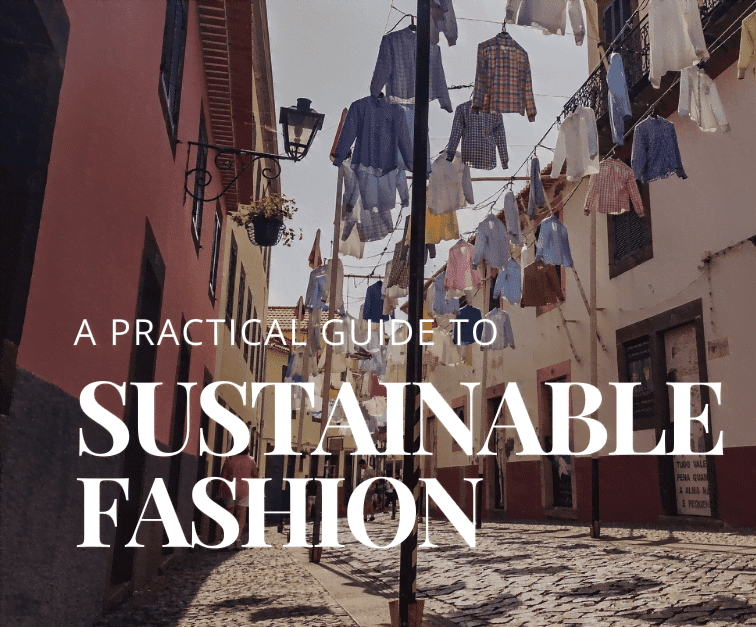Environmental concern is an omnipresent issue in the mind of buyers. 89% of all consumers have shifted their purchasing behavior and choices shifted towards buying more sustainable products over the past five years worldwide in 2022.
They’re not just falling for a “eco-friendly” label slapped on a product; they’re demanding transparency and real action. The days of marketing gimmicks are over. People want to see genuine commitment to sustainability from the brands they support.
If businesses want to succeed now and in the future, they need to think green.
Unlock Your Savings with Exclusive Offer Coupons
Save big while shopping for sustainable products! Grab your exclusive coupons today!

As people become more focused on the long-term impact on our planet, they’re choosing products from brands that truly care about sustainability. Living sustainably is about more than just making eco-friendly choices—it’s about understanding and mitigating our impact on the world. This shift has made companies more accountable than ever.
With the urgency to tackle climate change, save resources, and cut pollution, the way companies market and engage with customers has changed dramatically.
In this brief guide, we’ll share what is green marketing, from its evolution to practical steps for building a brand that stands out for its responsibility and resilience. Let’s kick it off!
What is Green Marketing?
Green marketing is all about promoting products and services with an environmental twist. Sometimes called sustainable or environmental marketing, it’s a way for businesses to show they’re serious about protecting the planet.
This approach highlights a company’s dedication to sustainability, making eco-friendly marketing choices a key part of their brand.

So, what does this marketing actually involve?
Here’s a breakdown:
- Product Development: Companies focus on creating products that are gentle on the planet. Think of minimal environmental impact, sustainable materials, and energy efficiency.
- Marketing Strategies: It’s not just about making green products; it’s about talking about them too. This includes eco-friendly marketing and eco-friendly packaging, advertising that highlights sustainability, and branding that reflects a commitment to the environment.
- Supply Chain Management: Businesses work to cut down on greenhouse gas emissions and reduce their environmental footprint. This means streamlining supply chains, cutting waste, and adopting greener practices.
- Corporate Social Responsibility: Beyond just selling green products, companies are also integrating environmentally friendly policies into their operations to build a reputation for being eco-conscious.
- Consumer Education: This marketing should also include campaigns to educate your customers in the fight against wasteful spending, waste management, and sustainable practices that help the environment, so they can further themselves in our fight against climate change.
In a nutshell, sustainable marketing is caring about the triple bottom line, and aligning your business with environmental values for the future including implementing corporate social responsibility (CSR) practices. Now that we know what is green marketing, we’ll look into its evolution.
Green Marketing in 2024 and Beyond
Green marketing has significantly evolved over the years, driven by shifts in consumer attitudes, regulations, and environmental challenges. The concept first emerged in the 1970s, fueled by growing concerns about pollution and resource depletion. Early eco-friendly marketing efforts focused on promoting eco-friendly products and basic labeling.
However, in the 1980s and 1990s, environmental marketing faced skepticism due to “greenwashing”—when companies falsely claimed their products were environmentally friendly. This led to demands for greater transparency and stricter standards in marketing.

By the 2000s, eco-friendly marketing matured, with new regulations ensuring that environmental claims were credible. Certifications like Energy Star, Fair Trade, and organic labels gained importance as consumers sought assurance about the sustainability of the products they purchased.
Sustainable marketing entered the mainstream in the 2010s, as consumers increasingly demanded sustainable products. Businesses responded by incorporating sustainability into their marketing strategies and social responsibility initiatives.
How to Market Your Sustainable Business
Today, sustainable marketing examples goes beyond just environmental claims. It now encompasses broader sustainable business practices, including social and ethical concerns. Sustainable marketing is no longer a niche—it’s a key component of business strategy.
Here’s how your sustainable business can nail it:
Eco-Friendly Product Design

Develop products with a reduced environmental impact by using sustainable materials, improving energy efficiency, and designing for durability, recyclability, or repurposing. Focus on creating items that minimize waste and resource consumption throughout their lifecycle.
Innovation for Sustainability

Invest in research and development to drive innovations in eco-friendly production processes. Emphasize technologies that reduce resource use, lower emissions, and contribute to a more sustainable business model.
Sustainable Packaging

Minimize excess packaging by using recyclable, biodegradable, or compostable materials. A notch above sustainable packaging would be considering packaging-free options when possible, and displaying eco-labels and certifications to clearly communicate your product’s environmental benefits to customers.
Eco-Friendly Supply Chain

Collaborate with suppliers who adhere to sustainable and ethical sourcing standards. Optimize your supply chain for energy efficiency, reduce transportation emissions, and promote eco-friendly practices throughout the production process.
Green Advertising and Communication

Promote your green products with transparent, honest messaging. Avoid greenwashing vs. green marketing by ensuring your claims are accurate and substantiated. Use storytelling to connect with consumers on a personal level, and create educational campaigns that inform them about environmentally friendly materials and practices.
Green Partnerships and Collaborations

Form partnerships with environmental organizations and companies committed to sustainability. Collaborate on initiatives and joint marketing campaigns, or corporate social responsibility initiatives, that encourage sustainable consumer behavior and promote your shared commitment to the planet.
Overcoming Challenges in Sustainable Marketing
While green advertising offers numerous benefits, it also presents challenges that businesses must address to succeed. Here are some common obstacles and ways to overcome them:
Deceptive Green Claims
Challenge: Some companies engage in greenwashing vs. green marketing, using deceptive or exaggerated marketing to appear more environmentally friendly than they are.
Solution: Be transparent about your environmental initiatives. Back up your claims with verifiable data, and seek third-party certifications to add credibility. Avoid vague or broad statements, and instead use specific, measurable facts to demonstrate your impact.
Overcoming Consumer Skepticism
Challenge: Due to past instances of greenwashing, many consumers are skeptical of sustainability claims.
Solution: Educate your audience by clearly communicating your sustainability efforts. Highlight the tangible environmental benefits of your products and show your long-term dedication to eco-friendly marketing practices. Engage with consumers through social media and other channels to address their concerns and foster trust.

Regulatory Compliance
Challenge: Navigating and staying compliant with evolving environmental regulations can be complex, especially when they vary by region.
Solution: Stay informed about relevant local, national, and international environmental regulations. Join industry associations that provide updates on compliance and seek guidance from environmental or legal experts to ensure your business meets all necessary standards.
Adopting Green Technologies
Challenge: Keeping pace with the latest eco-friendly technologies can be difficult, and the initial cost of adopting sustainable practices may seem high.
Solution: Invest in research and development to stay current with green technologies. Consider the long-term financial benefits of adopting sustainable practices, which can often lead to cost savings over time. Evaluate the return on investment not just in terms of immediate costs but also in terms of reduced energy consumption, waste, and operational efficiency.
Implementing Sustainable Marketing in Your Business
Incorporating green advertising into your business strategy is a proactive approach that addresses environmental concerns, meets customer expectations, and promotes sustainability.
Here are key steps to successfully implement green advertising in your business model:
Assess Your Environmental Impact

Before developing your sustainable marketing examples strategy, it’s essential to evaluate your business’s current environmental impact. Understanding your carbon footprint across operations, products, and supply chains allows you to pinpoint areas for improvement. Whether it’s reducing energy use, minimizing waste, or utilizing sustainable materials, this assessment helps identify opportunities to enhance your sustainability efforts while recognizing your existing strengths.
Set Green Goals and Objectives

Once you’ve assessed your environmental impact, the next step is to establish clear and measurable green goals. These objectives should align with your core business values and meet your target audience’s sustainability expectations.
Whether your focus is on reducing carbon emissions, increasing renewable energy use, or adopting sustainable packaging, setting defined goals helps guide your business decisions and inspire your team to create eco-friendly products. Achieving these goals demonstrates your commitment to sustainability, building trust with your customers.
Engage and Train Employees

For green business practices to be effective, it’s important to engage and train your employees to support your sustainability initiatives. Providing education and training ensures that everyone understands your green goals and knows how to contribute. Encourage team members to participate in sustainability programs, suggest improvements, and recognize their contributions to your environmental efforts. A motivated workforce is key to driving the success of your marketing strategy.
Aim for Continuous Improvement

A crucial aspect of your green business practices and marketing initiative is ongoing monitoring and improvement. Use key performance indicators (KPIs) to track the impact of your sustainability campaigns and regularly evaluate your environmental performance. By continuously refining your strategies based on data and results, you can adapt to changing consumer preferences, environmental regulations, and marketing trends. This commitment to improvement ensures your green marketing examples and efforts remain effective and relevant.
Future Trends in Green Business Practices

As environmental concerns evolve, it’s vital to stay ahead of emerging trends in sustainability marketing examples. Technology integration is playing an increasingly important role, with advancements in AI, data analytics, and the internet offering new opportunities to track, report, and optimize sustainable efforts. Tools like data analytics, email marketing, and automation can enhance your messaging and personalization and give your better ideas on sustainability marketing examples, making your green marketing examples and campaigns more impactful.
Look for Collaboration Opportunities

Global collaboration for sustainability is another key trend shaping the future of green business. Governments, corporations, and nonprofits are increasingly working together to address environmental challenges on a global scale. To support these partnerships, marketing automation and customer relationship management (CRM) tools facilitate seamless communication, enabling more effective collaboration on sustainable initiatives.
Green Marketing with Ecowiser
Ecowiser empowers sustainable businesses to reach new heights through tailored pricing plans that cater to different needs. Whether you’re just starting or looking to scale, Ecowiser’s flexible options offer tools to boost visibility, drive sales, and engage with eco-conscious customers. From free plans to advanced advertising solutions, Ecowiser supports your journey toward a greener, more impactful future. Unlock your brand’s potential with Ecowiser’s flexible business plans, designed to enhance visibility, boost sales, and connect with eco-conscious consumers.
From the Free Starter Plan to the Content Growth Plan with editorial reviews, or the Advertising Growth Plan for site-wide promotions—there’s a solution for every business size. Join a growing community focused on sustainability and gain access to valuable tools, like impact assessments and influencer promotions.
Ready to grow your sustainable business? Click here to get started.

Want to read more like this?
Get similar stories and a free sustainability checklist delivered to your inbox.

Like our content?
Get similar stories and a free sustainability checklist delivered to your inbox.

Frequently Asked Questions
What is green marketing?
Green and sustainable advertising promotes products or services based on their environmental benefits. It highlights eco-friendly practices and sustainable production methods to attract consumers who prioritize environmental responsibility. The aim is to appeal to those who want to support businesses committed to reducing their ecological footprint.
Who is a green marketer?
A green marketer specializes in promoting environmentally friendly products or services and has environmental responsibility. They develop strategies that emphasize sustainability, ensure accurate representation of eco-friendly features, and align marketing efforts with genuine environmental commitments. Their role is to connect with eco-conscious consumers and enhance the brand’s green image.
What is greenwashing vs. green marketing?
Green promotion involves authentic efforts to highlight environmental benefits, with transparent and truthful claims. Greenwashing, however, is deceptive marketing that exaggerates or falsely claims eco-friendliness to mislead consumers. Greenwashing lacks genuine sustainability efforts and can misrepresent a company’s environmental impact.
Why is green marketing important?
Green and sustainable advertising promotes sustainability and supports environmental responsibility. It enables consumers to make informed choices about eco-friendly products, encourages businesses to adopt sustainable practices, and helps reduce overall environmental impact by fostering a market for environmentally conscious goods and services.
What are some green marketing examples and sustainable marketing examples?
Some sustainability marketing examples include companies using recycled packaging, businesses that offset carbon emissions, and products with credible eco-certifications. Clear communication about these practices in marketing helps consumers understand the environmental benefits and supports informed purchasing decisions aligned with their sustainability values.











